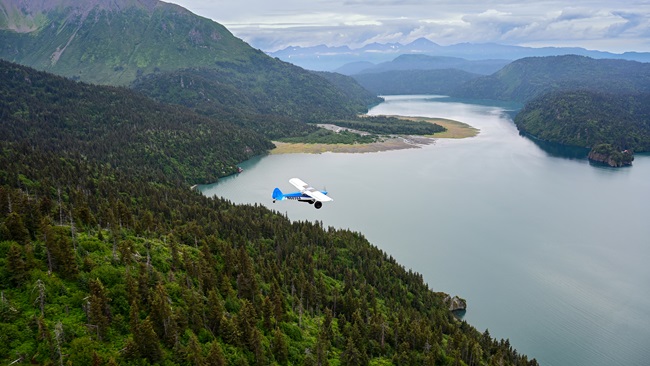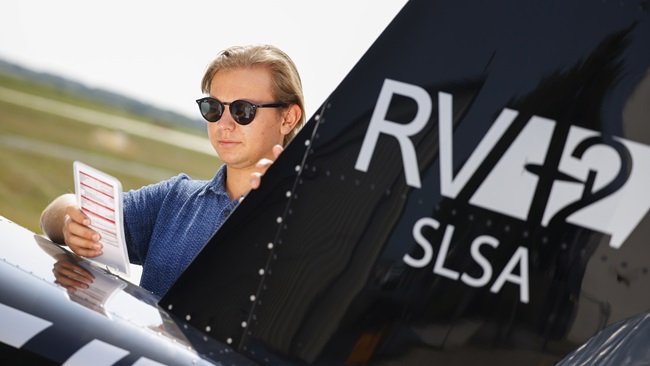Safety Spotlight: Hidden risks
Flying the backcountry is tougher than it looks
I was with Steve Maus, a friend through the Recreational Aviation Foundation, exploring Montana in his well-equipped turbo Cessna 182. Our first stop out of Bozeman Yellowstone International Airport was Ryan Field (2MT1), the RAF’s flagship field for its work acquiring and protecting backcountry airstrips.
Steve and I reviewed Ryan operations extensively the night before, and again the morning of our departure. We relied heavily on the RAF’s field guide, which is mandatory to review before accessing 2MT1. At 3,500 feet msl and 2,500 feet long, Ryan is not an especially demanding backcountry strip, but it’s not “easy,” either. The Runway 16 pattern has a river boundary that dictates a close base leg, followed by tall trees on the approach end of the runway. Trees and hills at the departure end require a timely go-around decision, good execution, and an early turn out.
The combination of a close base and tall trees on final requires pilots to be ready for a short final and to drop over tall trees quickly to limit the unused runway behind them. You have no business flying in the backcountry if you can’t execute short-field, soft-field, and 50-foot obstacle clearance techniques confidently and consistently well.
Three techniques work well in landing scenarios like Ryan Field. We could probably start a religious war over which is optimum, but I’ll leave that for the bar. The first, Steve’s method that day, is to fly on speed, as low over the trees as is comfortable, and then maintain stable, precise short-field landing speed on a steady glidepath to touchdown; you may chew up some approach-end runway, but you’ll be fine in a 182 on a 2,500-foot runway because of the short rollout after touchdown. Steve flew it well, and we stopped with about 700 feet remaining.
A Van’s RV–7 landing behind us used a different technique. The pilot flew close over the trees, on speed, and then chopped power and dropped toward the runway at a substantial sink rate. Approaching the roundout, he powered up to break the dramatic sink rate, then powered to idle for the flare and touchdown. It was exceptionally well done. I would have applauded, but such is not the etiquette in the understated culture of the backcountry, so I merely nodded recognition as he taxied in.
A third technique is to carry a tad bit of extra speed over the trees, slip aggressively once past them, and then straighten out and power as required to manage the touchdown. This version of option two is likely to waste less runway once past the trees, but requires more—and more substantial—flight control action.
Any of these techniques work. What’s most important is not which you choose, but how well you execute. Pick your favorite, for your airplane, in your situation, and execute it well, as Steve and the RV–7 pilot did.
The accident that didn’t happen was a 182 that came in after us. It turned base inside the river but was too high over the trees. The pilot dove for the runway, but picked up too much speed. He kept descending toward a landing, well down the runway, too high, too fast. We all stopped what we were doing, each of us silently urging go around, dude, which he did with room to spare. Good decision. He came around for a second approach, and then a third—each with a similar profile, only an earlier go-around decision. Finally, after the fourth attempt, he went around and departed the area. Excellent decision.
I wish I could have met the pilot. I would have congratulated him on each of the decisions he made and the final decision to depart. Sure, we can quibble that four is too many (three is my personal limit), but he made sound go-around decisions and finally recognized it was too much for him and his airplane that day.
I might also offer this advice: Come back and try again, but bring along a backcountry-experienced CFI. His fundamental problem that day was that he didn’t commit to the sink rate; the slow, behind-the-power-curve speed; or the proximity to the trees that Runway 16 at Ryan demands. He kept trying the same, more or less standard approach with the same results. That’s an indication that he doesn’t have the knowledge and the training necessary for the situation. He didn’t seem to understand what skills to apply or what strategy to take. It wasn’t in his tool bag—something a CFI could remedy.
Backcountry flying looks easy on YouTube videos, but there are hidden risks that it takes experience to spot. We’ve had a few mishaps this summer by pilots who underestimated the challenges and attempted flying the backcountry without proper training. Fortunately, the pilot at Ryan Field that day exercised good judgment, went around, and departed. I hope he comes back—with a backcountry instructor.
Go fly.
Email [email protected]



